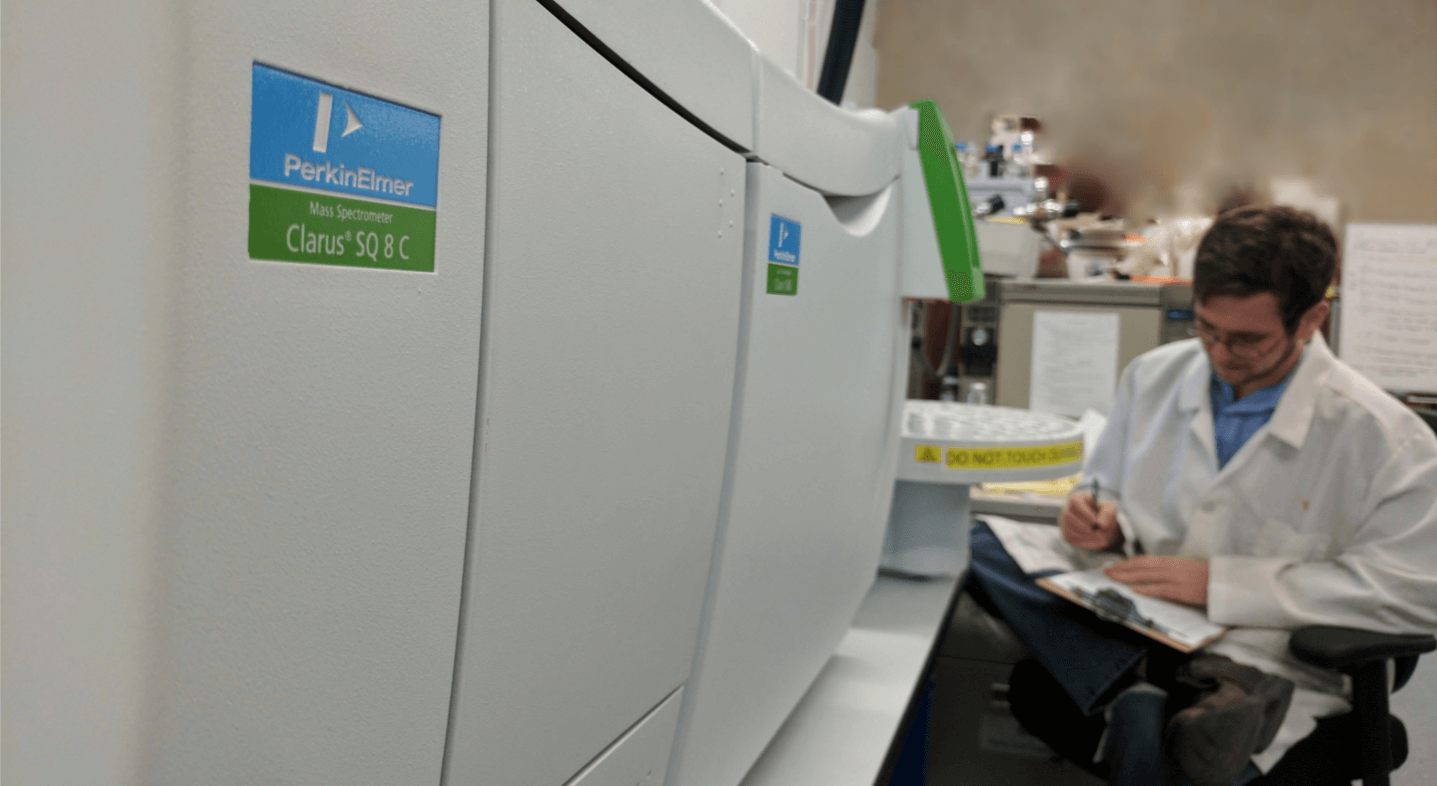Confidence Analytics is pleased to announce that after months of method development we are now in full production with our brand new, state-of-the-art Gas Chromatograph with Mass Spectrometry (GCMS). This instrument now empowers us to offer the very best in scent and flavor analysis, with high sensitivity and selectivity to over 45 terpenes and esters commonly found in cannabis, as well as in-depth residual analysis of over 20 solvents and solvent impurities.
A terpene profile is a powerful method of strain identification and characterization. Far more informative than any “total” value, the relative concentrations of terpenes in a flower are signature to its phenotype and are the hallmark of its character. Further grouping of terpenes into their four major classes offers a robust method for evaluating the curing and extraction processes (in decreasing order of volatility: mono-terpenes, mono-terpenoids, sesqui-terpenes, and sesqui-terpenoids). A flower that has been cured slowly and carefully will retain more mono-terpenes than the same strain cured quickly and recklessly. Similarly, an extraction process that stays cold throughout will preserve mono-terpenes far better than an extraction process that involves excessive heat or vacuum. Mono-terpenes are what give marijuana flavor its brightness, lending notes of citrus, pine, and lavender. Sesqui-terpenes, in contrast, give marijuana scent its earthiness, with darker, more pungent notes reminiscent of diesel, skunk, and leather.
GCMS will quickly become the standard in this industry for volatiles analysis, and Confidence Analytics is proud to lead the way in that regard. Increasingly, our industry is realizing that “total THC”, “total Cannabinoid”, or “total Anything” is an insufficient metric for judging and grading marijuana products. Instead, the beautiful diversity that marijuana provides is what truly gives it its value, and the terpene profile is at the core of that diversity.
Here is a list of all the terpenes we now have on our method, in addition to measuring the esters Hexyl-butyrate and Hexyl-hexanoate:
| Mono-Terpenes | Mono-Terpenoids | Sesqui-Terpenes | Sesqui-Terpenoids |
|---|---|---|---|
| Thujene | Tetrahydrolinalool | Sesquithujene | Cis-Nerolidol |
| A-Pinene | Linalool | Cis-a-Bergamotene | Trans-Nerolidol |
| Camphene | Fenchone | Santalene | Guaiol |
| Sabinene | Fenchol | Farnesene | Eudesmol |
| B-Pinene | Iso-Pulegol | Caryophyllene | Humulene-Oxide-II |
| Myrcene | Cis-Carveol | Italicene | Bisabolol |
| A-Phellandrene | Terpineol | Humulene | Iso-valencenol |
| Carene | Geraniol | Himachalene | |
| Sulcatone | G-Gualene | ||
| A-Terpinene | Bisabolene | ||
| Limonene | Maaliene | ||
| P-Cymene | Naphthalene1 | ||
| B-Phellandrene | Selinadiene | ||
| Ocimene | CaryophelleneOxide | ||
| G-Terpinene | |||
| Terpinolene |
If you’d like to learn more about our terpene analysis, you can read from our brochures, which we will be updating shortly:
ENHANCED VOLATILES ANALYSIS PRODUCT BROCHURE
A GUIDE TO COMMON TERPENES IN CANNABIS
Also, be sure to check out our blog, where we discuss issues most relevant to the business of marijuana testing and quality assessment:
IT’S MARIJUANA NOT METHAMPHETAMINE; WHY GOING LEGAL IS NOT LIKE BREAKING BAD

